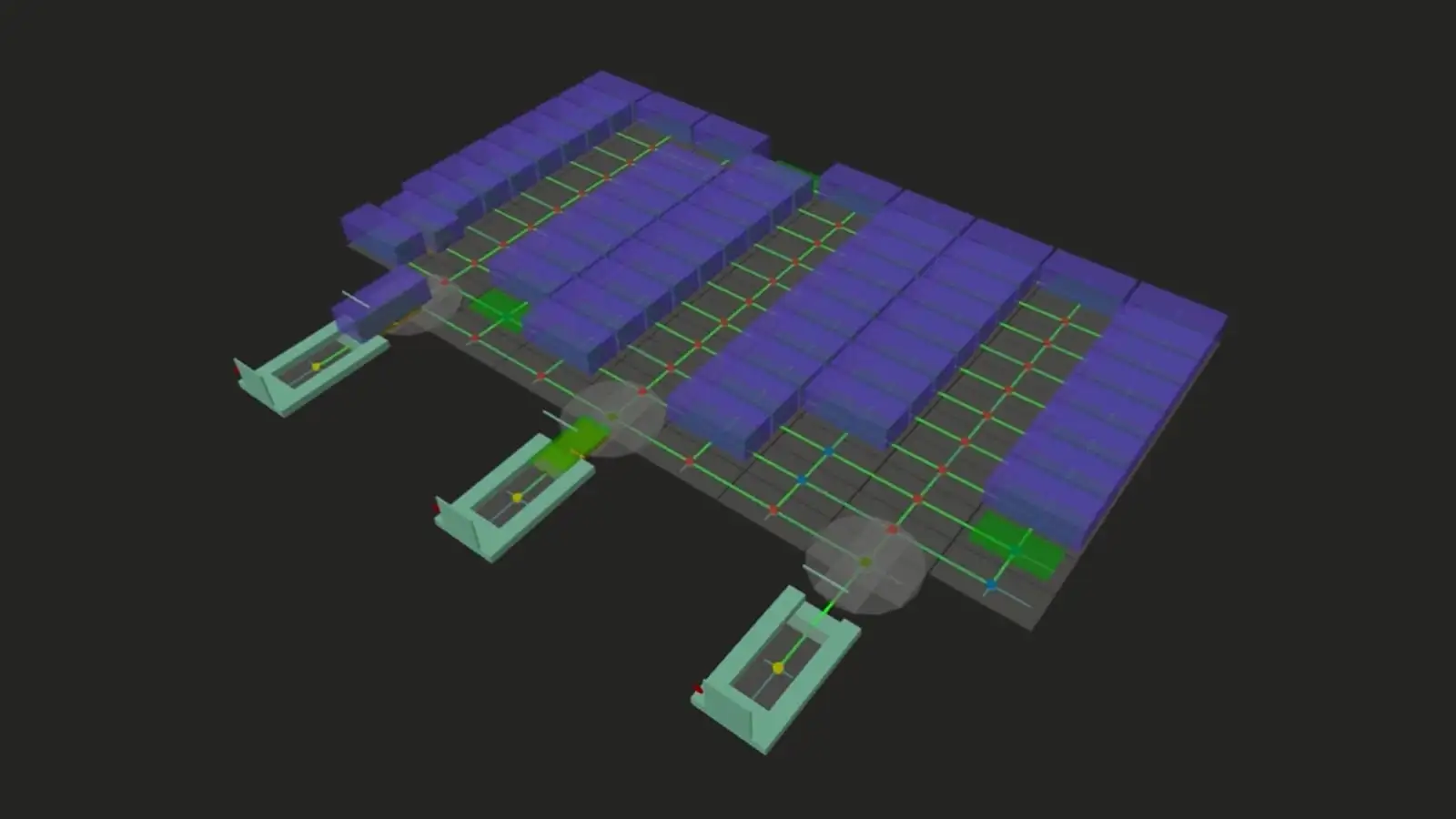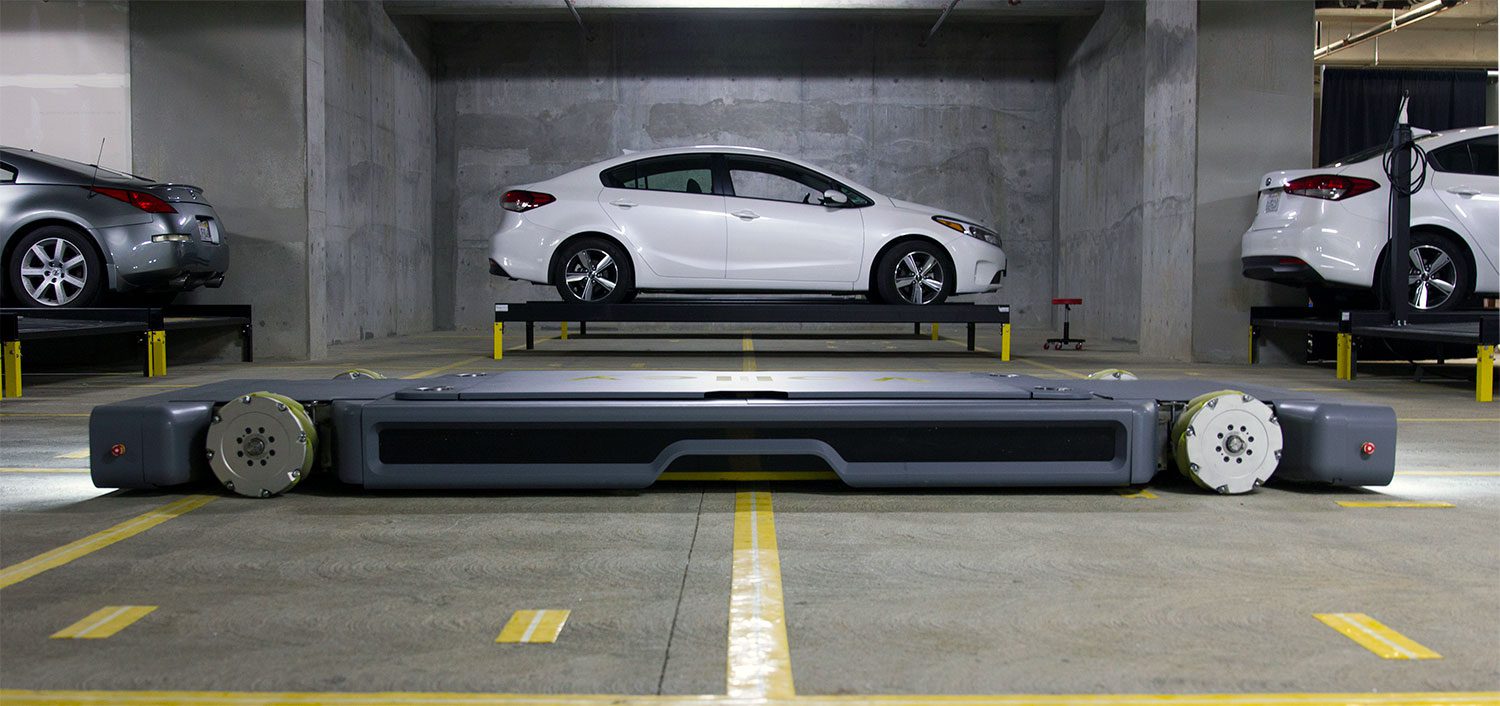
As urban areas grow more congested, innovative solutions like autonomous parking systems are beginning the transition from “novel” to “essential”. These systems, similar to the reliable technologies used in warehouse logistics such as Amazon’s Kiva robots, optimize space usage and reduce the time required to park and retrieve vehicles. Volley’s autonomous guided vehicles (AGVs) take center stage, but are only one component of the system. The most complex problems in parking automation lie within the scheduling software, which is tasked with optimizing efficient space management, optimal path planning, re-routing, and even maintenance and charging monitoring.
The Big Challenge: Path Planning
In autonomous parking garages, path planning ensures that vehicles are parked and retrieved in the most efficient way possible. Volley’s scheduling software calculates the quickest and safest route for each vehicle to reach a parking spot, aware of its own task, and the tasks being performed by other AGVs at the same time. This enables the scheduling software to maximize space utilization and reduce the time drivers spend waiting for their vehicles.
Like in a dynamic warehouse environment, the parking system must adapt to constantly changing conditions—new vehicles arriving, others leaving, and varied peak times. The software maintains the real-time state of the garage, which is crucial for dynamically assigning parking spots based on current availability and proximity, thereby optimizing traffic flow within the garage.
Automatic Re-Routing
Path planning isn’t enough, because conditions in a garage change constantly. Re-routing is a key feature that ensures the system remains operational even when changes occur, such as a spike in traffic, or a temporarily obstructed path. Like GPS navigating past a congested part of town, the scheduling software instantly recalculates routes, directing other AGVs to manage the rearrangement of vehicles if necessary. This ensures a seamless experience for users.
Why Software is the Hero
Thanks to their many years of use in warehouse logistics, AGVs like Volley’s are already well proven. To efficiently manage an increasing number of vehicles, especially in environments like airports or shopping centers, the software that guides the system becomes essential for not only parking, but also a garage’s many other connected elements. Seamless integration with other transportation and payment systems is crucial for a smooth user experience, as well as integrations with Volley’s automated EV charging stations, user apps and kiosks, and building operations. Then add the fact that each parking facility has unique characteristics, so the software must be adaptable to different layouts and capacity requirements, and the complexity becomes even more clear.
Autonomous parking systems offer promising advances in urban planning, but require modern approaches to software that are not yet common in the parking industry. By adopting proven hardware from warehouse robotics, controlled by advanced software developed specifically for parking systems, Volley can significantly enhance the efficiency of vehicle storage and retrieval.






